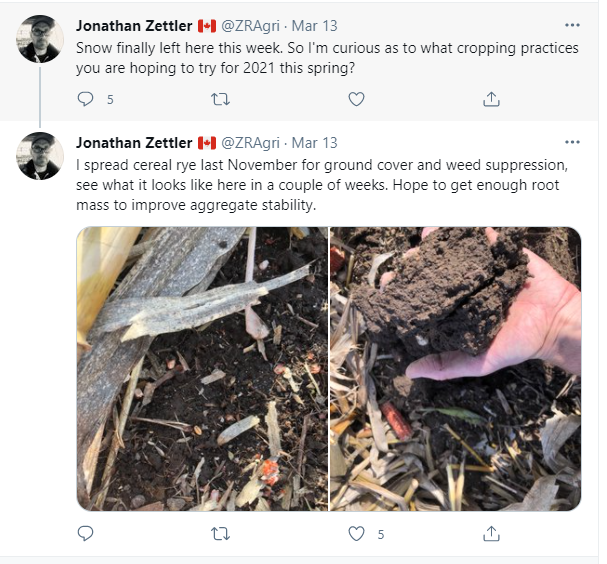Written By Jonathan Zettler CCA-ON BSCIA Vice-President
That looks interesting! Or maybe it is, well that is likely to be a crop failure?!? Checking out social media is a great way to share new crop production practices in real time. While being able to interact with the person making the posts and taking the pictures, along with videos and other comments. It can be a great way to provide
two-way communication, more than what you are getting right now as you read my article. I think one of the best aspects of agriculture on social media is that you can find almost someone in the world, somewhere, trying to adopt what you hoping to do. But I would like to point out there are a few caveats on these crop production practices. And that is that you cannot bend the laws of crop physiology to support your crop production philosophy. To name a few, there are peak water requirements, optimal stands, only so much sunlight to go around, allelopathy, and plant (weed) interference.
Thinking in big picture, one concept I use when evaluating different crop production practices is the following: Starch/Protein Accumulation = # of plants + water + sunlight + heat + fertility.
As someone growing grain and oil seeds, or perhaps forages, your management will impact the various boxes within this concept. Let’s say your considering a plant green soybean plot as part of your on-farm trials. How would this change in management impact the various boxes above?
Population – perhaps having issues with seed trench closure means using after market attachments, planting deeper or increasing your seeding rate.
Water – with a living cover crop, you will likely be wanting to keep an eye on available soil moisture, to ensure both the crop and cover crop do not reach peak water requirements at the same time, especially if the soil is unable to provide them.
Shading – There is a quite a bit of research and personal experience to demonstrate that shading or limiting photosynthesis will impact starch or protein accumulation. Just ask your neighbours with solar panels connected to the grid, how low or less sunlight means less energy to harvest.
Heat – The late May 2021 frosts in parts of the province are providing an indication that some management practices may lend themselves to increased risk of spring frost? Or maybe delayed planting means risk of fall frost? How do you mitigate the risk of these events from occurring? Will the species in question warm up the soil, or act as a cold, wet blanket, increasing the risks?
Fertility – How will you be applying fertilizer to the field? If you are not working the field, and the soil test indicates the soil is highly responsive, what is the plan for the 4R’s of fertility management (right source, place, rate, and time)?
The plant green soybean plot example is just one management practice I see being tried on farms and fields throughout the province. Before you hit the field when adopting these innovative practices, try and head off as many potential issues as possible by working through the “Starch/Protein Accumulation = # of plants + water + sunlight + heat + fertility“ concept.

